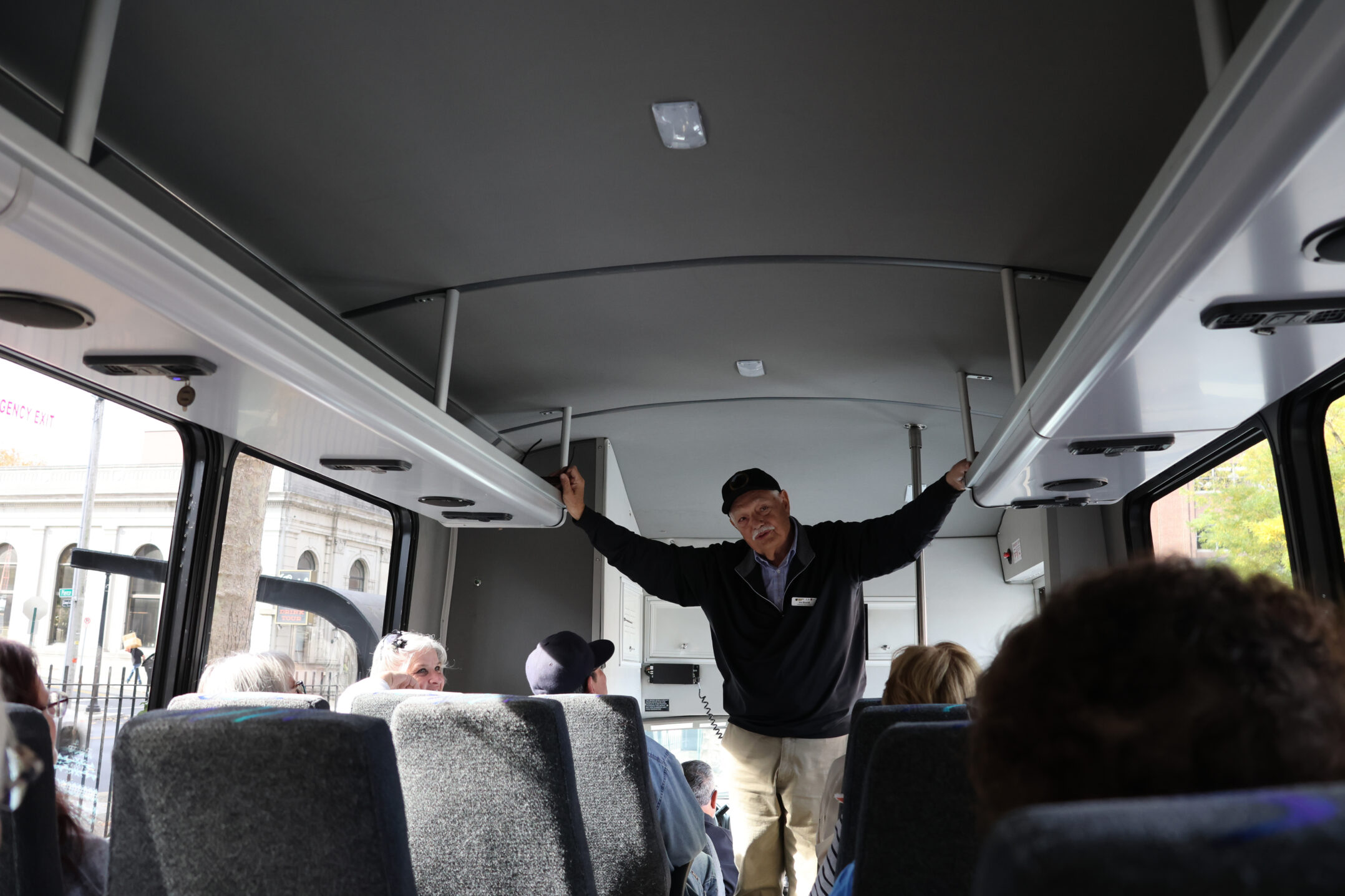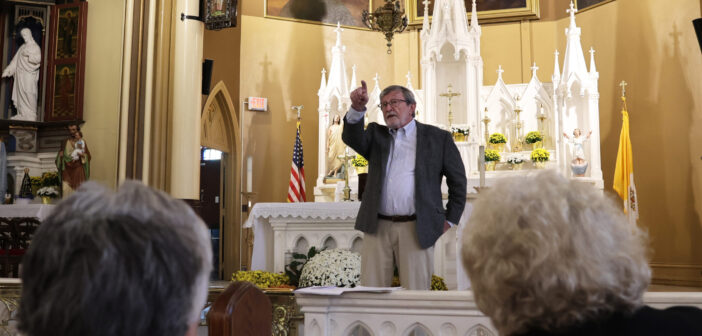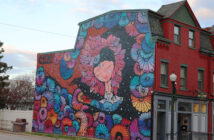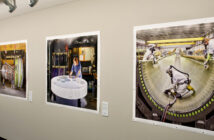For over eight years, Don Elliot has commuted to Bethlehem’s National Museum of Industrial History, fixed a name tag on his sweater and boarded a white minibus.
On Oct. 26, Elliot was in his element, guiding the third of six museum tours scheduled for the 2024 season.
Standing at the front of the bus, Elliot scanned the visitors aboard.
This Saturday, there was a group from a local elderly home, two retired Easton residents showing their friends around and a solitary woman keeping to herself.
As a volunteer tour guide for the museum, Elliot’s started to recognize some of the faces.
Since 2015, the National Museum of Industrial History, the Steelworkers’ Archives and the County of Northampton have partnered to present the “Steeples and Steel” tour. According to the Steelworkers’ Archives, the tour intends to honor the thousands of Eastern and Central European immigrants who settled in South Bethlehem during the late 1800s and early 1900s, became steelworkers and built their respective ethnic churches.
The first hour of the guided tour wound through the neighborhoods and churches of South Bethlehem with a stop inside a church for a presentation. The second hour consisted of a visit to the Bethlehem Steel plant site.
Following a paper script, Elliot directed the bus driver through the hills of the South Side, stopping at 20 different active and former churches, most just a block or two apart.
Over the sound system, he explained a church was Italian. The next was Slovakian. After that, one was Hungarian, another Irish.
“They all wanted their own church and their own social hall,” Elliot said to the group. “My grandfather always told me there was a church on every corner and a bar across the street.”
As a fourth-generation worker at Bethlehem Steel, Elliot wears his legacy as a badge of honor. He repeatedly told the tour group he had worked at the plant until the day it closed.
At its peak, Bethlehem Steel employed 30,000 people. When the last operating blast furnace at Bethlehem Steel shut down in 1995, the demographics of South Bethlehem shifted. Many former steelworkers left the area in search of employment and new communities moved in.
As the population grew in South Bethlehem, the percentage of individuals identifying as white decreased from 81.8% to 65.5% between 2000 and 2023, according to census data.
Most of the churches Elliot showed visitors through the bus windows are no longer active places of worship. One has since become the site of the Hispanic Center Lehigh Valley. Another three were purchased by Lehigh University in 2023.
On Oct. 26, the morning tour group visited Packer Memorial Church, while the afternoon group stopped at Holy Infancy Church.
At Holy Infancy, the church’s business manager Joe McCarthy explained to the group that the church, founded in 1861, is the oldest Roman Catholic church in Bethlehem. To accommodate South Bethlehem’s diversifying population, the church now offers weekly Masses in English, Spanish and Portuguese.
“I was impressed by the dedication of people willing to work with three different languages and three different groups to keep their church going,” Janet Herr, a tour attendee, said.
Herr said she had taken the tour at least five times before Oct. 26.
Having grown up near Easton and studied history at East Stroudsburg University, Herr said she’s always had a passion for the subject, but her interest in South Bethlehem’s past was sparked by the closure of Bethlehem Steel.
She’s been on tours featuring visits to Holy Ghost Catholic Church and the Cathedral Church of the Nativity.
“The stained glass windows in each of these churches, the beauty and the artwork, (are) so impressive,” Herr said. “It becomes emotional.”
She said she and her husband, Don Herr, enjoy bringing along new friends each time they take the tour.
“It’s just a joy to share this,” she said.
As the first leg of the tour ended, the bus returned to the National Museum of Industrial History.
There, Jim Brandl, a third-generation Bethlehem Steel worker who spent five summers at the plant as a rigger and now volunteers at the museum, got on board.
The minibus slowly made its way through the former steel plant.

Jim Brandl leads a “Steeples and Steel” bus tour on Oct. 26. The tour honors European immigrants who were steelworkers in the late 1800s and early 1900s. (Amadea Lehoczky Escobar/B&W Staff)
Brandl said 80% of the New York City skyline is made of Bethlehem Steel. The factory was the backbone of South Bethlehem and of the entire nation, he said, as it contributed to major infrastructure projects such as bridges, railroads and military ships during wartime.
Brandl told the group the site was being torn down after its closure until Jeff Parks, the founder of ArtsQuest, intervened to preserve its history and transform it into the SteelStacks.
As Brandl spoke, the bus passed the former iron foundry and the early construction of Christkindlmarkt, moving between the Hoover-Mason Trestle and the ArtsQuest Center.
“If I would’ve said, ‘Hey, one day all of this out here, this will be an entertainment center,’ they would’ve thrown me off the glass furnace,” Brandl said. “No one could have imagined in 1970 that (Bethlehem Steel) would be gone.”
The final date of the “Steeples and Steel” 2024 tour is Nov. 9.
“I’m trying to clear my calendar,” Herr said. “If I’m not able to do that, our friends and Don and I will do it again next year.”






Comment policy
Comments posted to The Brown and White website are reviewed by a moderator before being approved. Incendiary speech or harassing language, including comments targeted at individuals, may be deemed unacceptable and not published. Spam and other soliciting will also be declined.
The Brown and White also reserves the right to not publish entirely anonymous comments.